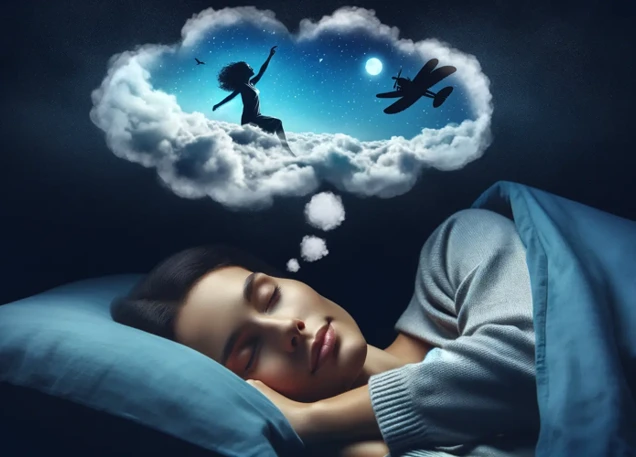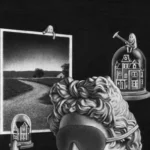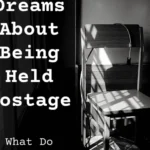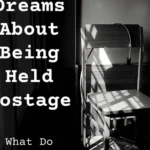Have you ever experienced the unsettling sensation of being trapped in your dreams? Dream claustrophobia, as it is commonly known, is a phenomenological experience that many individuals encounter during their sleep. It is marked by a profound sense of confinement and powerlessness, which can leave dreamers feeling overwhelmed and anxious. In this article, we will delve into the psychological meanings behind dream claustrophobia, exploring its symbolism, potential interpretations, common triggers, and strategies for overcoming this unsettling dream phenomenon. So, fasten your seatbelt and join us on this introspective journey of understanding the enigmatic world of dream claustrophobia.
What is Dream Claustrophobia?
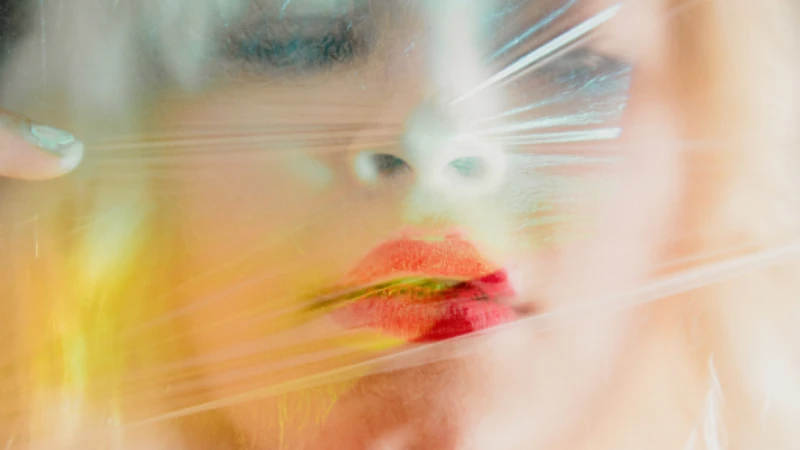
Dream claustrophobia refers to the psychological experience of feeling trapped or confined in one’s dreams. It is characterized by a sense of tightness, restriction, or imprisonment within the dream world. Dreamers may find themselves in small spaces, such as locked rooms or crowded elevators, that evoke feelings of discomfort and anxiety. This phenomenon can manifest in various ways, with individuals experiencing different scenarios and environments that evoke a strong sense of claustrophobia. Whether it’s being trapped in a maze, stuck in a narrow tunnel, or struggling to breathe in a suffocating dream, the underlying theme remains the same – a profound feeling of confinement and powerlessness. Understanding the nature of dream claustrophobia can provide insights into its psychological meanings and help individuals navigate this perplexing dream experience.
The Symbolism of Being Trapped
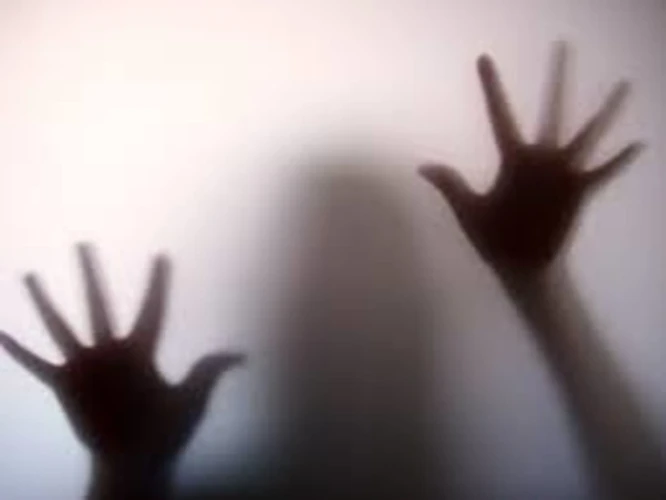
Being trapped in dreams carries significant symbolism that can shed light on our subconscious thoughts and emotions. Firstly, it often represents feelings of powerlessness, where individuals feel trapped in a situation or unable to escape certain circumstances in their waking life. This powerlessness can manifest as a fear of confinement, where dreamers experience a sense of being trapped in small spaces, unable to move or break free. Being trapped in dreams can also be a result of emotional residue, where unresolved emotions or traumas manifest symbolically as being physically trapped. These symbolic representations provide clues to the deeper psychological meanings behind dream claustrophobia, offering an opportunity for self-reflection and exploration of one’s unconscious mind. So, let’s dive deeper into these psychological interpretations and gain a better understanding of the complexities behind being trapped in our dreams.
1. Feelings of Powerlessness
Feelings of powerlessness are a common theme in dreams characterized by claustrophobia. When individuals experience dream claustrophobia, they often find themselves in situations where they have little or no control over their surroundings or circumstances. They may struggle to find an escape route or feel paralyzed by the confined space they are in. This sense of powerlessness can evoke feelings of fear, anxiety, and vulnerability. The dreamer may feel trapped within their own mind, unable to exert any influence over their dream environment. These feelings of powerlessness can be indicative of deeper psychological issues or a reflection of real-life situations where the individual feels powerless or trapped. Understanding and addressing these underlying feelings can help in overcoming dream claustrophobia and gaining a sense of empowerment both in dreams and in waking life.
2. Fear of Confinement
The fear of confinement is a significant aspect of dream claustrophobia. In these dreams, individuals experience an intense aversion to being confined or trapped within a limited space. This fear can stem from a variety of sources, including real-life experiences of feeling physically restricted or emotionally suffocated. The dreamer may encounter scenarios like being locked in a small room, trapped in a narrow underground tunnel, or even struggling to break free from restraints. The fear of confinement in dream claustrophobia reflects a deep-seated psychological unease with limitations and a desire for freedom and autonomy. It is important to explore the underlying causes of this fear to gain a better understanding of its significance within the dreamer’s life and psyche.
3. Emotional Residue
Dream claustrophobia can also be influenced by emotional residue, which refers to lingering feelings or unresolved emotions from waking life that seep into our dreams. When we experience moments of confinement or powerlessness in our daily lives, these emotions can find their way into our dreamscapes, manifesting as dream claustrophobia. For example, if a person is going through a difficult breakup or feeling trapped in a toxic relationship, their dreams may reflect these emotions by depicting scenarios of being trapped, suffocated, or unable to escape. Similarly, unresolved fears, anxieties, or traumatic experiences can contribute to the presence of dream claustrophobia. By addressing and processing these emotions in waking life, individuals may find relief from the recurring sense of confinement in their dreams.
Psychological Interpretations
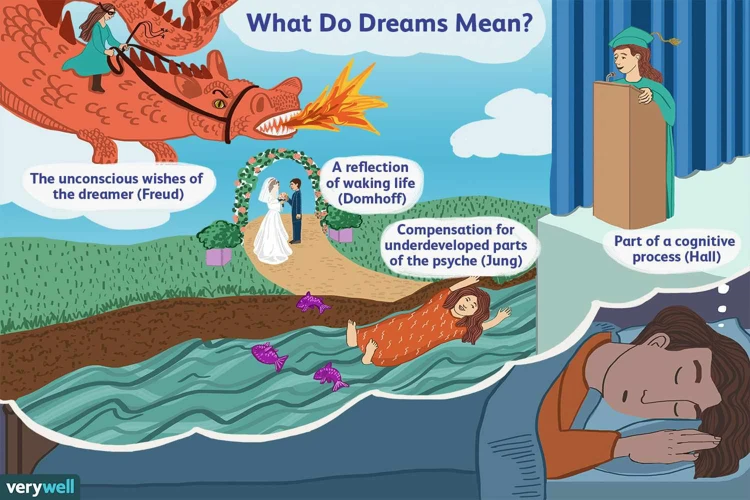
Understanding the psychological interpretations behind dream claustrophobia can shed light on the deeper meanings and implications of this dream phenomenon. Firstly, dream claustrophobia often signifies underlying feelings of anxiety and stress in one’s waking life. The sense of being trapped in a dream may reflect a subconscious manifestation of the individual’s current emotional state. Secondly, dream claustrophobia can be linked to a sense of control or lack thereof. Dreams of confinement may arise when individuals feel overwhelmed or powerless in their waking lives, serving as a symbolic representation of their perceived limitations. Lastly, dream claustrophobia can also indicate suppressed emotions and unresolved psychological conflicts. It may be a reflection of subconscious fears or past traumatic experiences that continue to shape the individual’s thoughts and feelings. By exploring these psychological interpretations, individuals can gain valuable insights into the underlying factors contributing to their dream claustrophobia and potentially address any unresolved issues.
1. Anxiety and Stress
Anxiety and stress play a significant role in the experience of dream claustrophobia. When individuals are feeling overwhelmed by daily life challenges, these emotions can seep into their dreams, causing feelings of confinement and powerlessness. High-stress levels can trigger recurring dreams of being trapped, symbolizing the individual’s struggle to cope with the pressure they face. These dreams may reflect a need for relaxation, self-care, or finding healthier coping mechanisms to manage anxiety in waking life. Understanding the connection between anxiety, stress, and dream claustrophobia can assist individuals in addressing the underlying issues that contribute to these distressing dreams. For more information on understanding dreams, you can explore our article on cheating dreams while pregnant.
2. Sense of Control
A key psychological interpretation behind dream claustrophobia is the sense of control. When individuals find themselves trapped in their dreams, it often reflects a deeper desire for control in their waking lives. The feeling of being confined and powerless in a dream can parallel real-life situations where individuals may feel a lack of control over their circumstances or emotions. This can manifest as a need for autonomy, the desire to break free from constraints, or the longing to assert oneself. Exploring the connection between the sense of control in dreams and waking life can provide valuable insights into personal aspirations and areas where individuals may seek more agency and empowerment.
3. Suppressed Emotions
Suppressed emotions play a significant role in the psychological interpretation of dream claustrophobia. In dreams, feelings of confinement may symbolize the repression or suppression of certain emotions or experiences in waking life. The dreamer may be avoiding or suppressing emotions such as fear, anger, or sadness, which in turn manifest as a sense of being trapped or suffocated in their dreams. It is important to examine these suppressed emotions and address them in order to alleviate the recurring theme of claustrophobia in dreams. By acknowledging and processing these emotions in waking life, individuals may find relief from the overwhelming sensation of confinement within their dreams.
Triggers and Common Scenarios
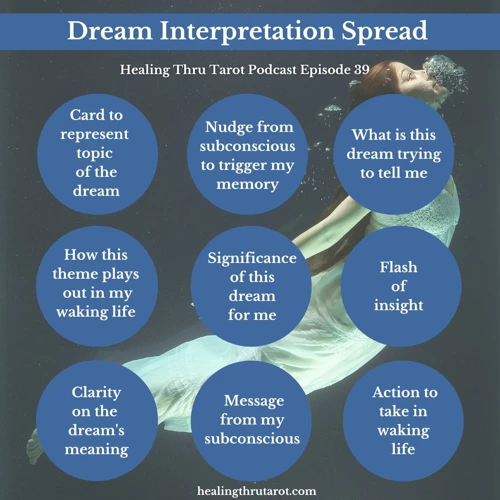
Triggers for dream claustrophobia can vary, but there are common scenarios that frequently evoke feelings of being trapped. One such trigger is being in claustrophobic environments in dreams. These can include small rooms, elevators, caves, or even underwater scenarios where the dreamer struggles to breathe. Additionally, relationships and trapped feelings can contribute to dream claustrophobia. Symbolically, feeling trapped in a relationship or having unresolved emotions can manifest as dreams of being confined or restrained. Traumatic experiences, such as being stuck in a car accident or surviving a natural disaster, can also trigger dream claustrophobia as the mind tries to process the emotions associated with those events. Each individual may have unique triggers that lead to dream claustrophobia, but understanding these common scenarios can help in interpreting the psychological meanings behind these dreams.
1. Claustrophobic Environments
1. Claustrophobic Environments: One common trigger for dream claustrophobia is being in confined or restricted spaces within the dream. This could involve scenarios where individuals are trapped in small rooms, narrow corridors, or crowded places. These environments create a sense of suffocation and limited movement, intensifying the feelings of being trapped. The claustrophobic nature of these dreams can symbolize a sense of being overwhelmed or constrained in waking life. It’s important to note that the interpretation of claustrophobic environments in dreams can vary from person to person, and understanding the individual’s unique experiences and emotions is crucial for a comprehensive analysis of dream claustrophobia.
2. Relationships and Trapped Feelings
In the context of dream claustrophobia, relationships can play a significant role in evoking feelings of being trapped. It is not uncommon for individuals to experience dreams where they feel entangled in complicated or suffocating relationships. These dreams may symbolize a sense of being emotionally trapped or restrained in real-life relationships. For example, dreaming of being trapped in a room with a controlling partner could reflect feelings of being stifled or confined within the relationship. Additionally, dreams of feeling trapped in an unhealthy dynamic with a friend, family member, or colleague can also contribute
Subscribe to Our Newsletter
Sign up to receive the latest news and updates.
3. Traumatic Experiences
Traumatic experiences can play a significant role in triggering dream claustrophobia. Trauma can leave a deep emotional imprint, causing individuals to feel trapped in their dreams as a reflection of their past distress. For example, individuals who have experienced physical or emotional abuse may dream of being confined or trapped in situations mirroring their traumatic experiences. These dreams can act as symbolic representations of the lingering effects of trauma, as well as the powerful emotions and feelings of helplessness associated with it. Exploring and processing these traumatic experiences, whether through therapy or self-reflection, can be instrumental in addressing and resolving dream claustrophobia stemming from past traumas.
Overcoming Dream Claustrophobia
Overcoming dream claustrophobia requires a combination of self-reflection, practice, and, in some cases, seeking professional help. One effective approach is to engage in self-reflection and journaling, where individuals can explore the underlying emotions and experiences that may be contributing to the sense of confinement in their dreams. By writing down their dreams and examining any recurring themes or patterns, they can gain a deeper understanding of their fears and anxieties. Additionally, practicing lucid dreaming techniques can empower individuals to take control of their dreams and actively change the narrative, allowing them to confront and navigate through claustrophobic situations with a newfound sense of agency. Finally, for those who find dream claustrophobia to be persistent and distressing, seeking assistance from a mental health professional can provide valuable support and guidance in addressing the underlying psychological factors contributing to the dreams. Ultimately, by actively engaging in self-reflection, employing lucid dreaming techniques, and seeking professional help when needed, individuals can take steps toward overcoming the grip of dream claustrophobia and reclaim a sense of peace and freedom in their dream world.
1. Self-Reflection and Journaling
Self-reflection and journaling are powerful tools for overcoming dream claustrophobia. Taking the time to reflect on your dreams and their underlying symbolism can provide valuable insights into the meaning and triggers behind your feelings of confinement. Start by keeping a dream journal, where you write down your dreams as soon as you wake up. This practice helps capture the details and emotions of the dream, allowing you to analyze them later. Pay attention to recurring themes or symbols related to claustrophobia in your dreams. Additionally, consider exploring any potential connections between your dreams and real-life experiences or emotions. By examining your dreams and engaging in introspective reflection, you can gain a deeper understanding of the psychological factors contributing to your dream claustrophobia and work towards overcoming it.
2. Lucid Dreaming Techniques
Lucid dreaming techniques offer a potential avenue for managing and overcoming dream claustrophobia. Lucid dreaming refers to the state of being aware that one is dreaming while still in the dream itself. This increased consciousness provides an opportunity for dreamers to exert control over their dreams, including the ability to alter the dream environment and escape feelings of confinement. Techniques such as reality testing, dream journaling, and visualizations can help individuals cultivate lucidity in their dreams. By practicing these techniques regularly, dreamers can enhance their ability to recognize when they are dreaming and actively engage with their dreams. With lucid dreaming, individuals can confront the experience of dream claustrophobia head-on, transforming feelings of confinement into opportunities for empowerment and exploration within the dream world. So, if you’re ready to dive into the realm of lucid dreaming, check out our guide on how to induce lucid dreams and unlock the power of your unconscious mind.
3. Seeking Professional Help
Seeking professional help is a valuable option for individuals experiencing persistent and distressing dream claustrophobia. Consulting with a qualified therapist or counselor can provide a supportive and therapeutic environment to explore the underlying psychological factors contributing to these dreams. A mental health professional can help individuals identify any unresolved emotional issues, trauma, or anxieties that may be manifesting in dream claustrophobia. Through various therapeutic techniques, such as dream analysis, cognitive-behavioral therapy, or trauma-focused therapy, individuals can gain a deeper understanding of their dreams and develop coping mechanisms to alleviate the distressing symptoms. Professional guidance can play a crucial role in helping individuals manage and overcome dream claustrophobia, empowering them to regain a sense of control and peace in their dream experiences.
Conclusion
In conclusion, dream claustrophobia is a fascinating psychological phenomenon that can provide valuable insights into our emotions, fears, and anxieties. The symbolism of being trapped in our dreams often points to feelings of powerlessness, fear of confinement, and unresolved emotions. By exploring the psychological interpretations and common triggers of dream claustrophobia, we can gain a deeper understanding of its potential causes and implications. Additionally, we discussed strategies for overcoming this unsettling dream experience, such as self-reflection and journaling, lucid dreaming techniques, and seeking professional help if needed. By unraveling the mysteries of dream claustrophobia, we can unlock new perspectives on our inner psyche and embark on a journey towards self-discovery and liberation. So, next time you find yourself trapped in a dream, remember that it may be an opportunity for growth and introspection.
Frequently Asked Questions
1. Can dream claustrophobia be a reflection of real-life claustrophobia?
Yes, dream claustrophobia can be related to real-life claustrophobia. The fear and anxiety experienced during dreams can sometimes mirror the feelings of being trapped or confined in waking life.
2. Are there any physiological factors that contribute to dream claustrophobia?
While dream experiences are primarily psychological, certain physiological factors like sleep disorders or breathing difficulties can influence the intensity of dream claustrophobia. Improving sleep quality and addressing any underlying health issues may alleviate its impact.
3. Can recurring dream claustrophobia indicate unresolved psychological issues?
Recurring dream claustrophobia may signify unresolved psychological issues. The repetitive nature of these dreams suggests a need to explore and address the underlying fears or conflicts that are manifesting as feelings of being trapped.
4. Is there a connection between dream claustrophobia and anxiety disorders?
Yes, dream claustrophobia can be linked to anxiety disorders. People with anxiety disorders often experience heightened feelings of fear and confinement, which can manifest in their dreams as well.
5. Can dream claustrophobia be a result of trauma?
Dream claustrophobia can sometimes be a result of trauma. Traumatic experiences, especially those involving confinement or a loss of control, can be deeply ingrained in the subconscious mind and resurface in dreams as a sense of being trapped.
6. Can lucid dreaming techniques help overcome dream claustrophobia?
Yes, lucid dreaming techniques can be effective in managing and overcoming dream claustrophobia. By becoming aware that you are dreaming, you can consciously alter the dream scenario and empower yourself to escape from the feelings of confinement.
7. Is journaling helpful in understanding the psychological meanings behind dream claustrophobia?
Yes, journaling can be an excellent tool for understanding the psychological meanings behind dream claustrophobia. Keeping a dream journal allows you to explore recurring themes, emotions, and symbols, providing insights into underlying psychological patterns.
8. When should someone consider seeking professional help for dream claustrophobia?
If dream claustrophobia regularly disrupts sleep, causes significant distress or affects daily functioning, it may be beneficial to seek professional help. A therapist specializing in dream analysis or cognitive-behavioral therapy (CBT) can assist in exploring the underlying causes and developing coping strategies.
9. Can medications be used to treat dream claustrophobia?
Medications are not typically prescribed specifically for dream claustrophobia. However, if the underlying cause of the dream claustrophobia is related to an underlying sleep disorder or anxiety disorder, medications may be used to alleviate the symptoms of these conditions.
10. Can overcoming dream claustrophobia have a positive impact on one’s waking life?
Absolutely! Overcoming dream claustrophobia can have a positive impact on one’s waking life. By addressing and resolving the underlying psychological issues, individuals may experience a greater sense of freedom, empowerment, and enhanced well-being in their daily lives.

